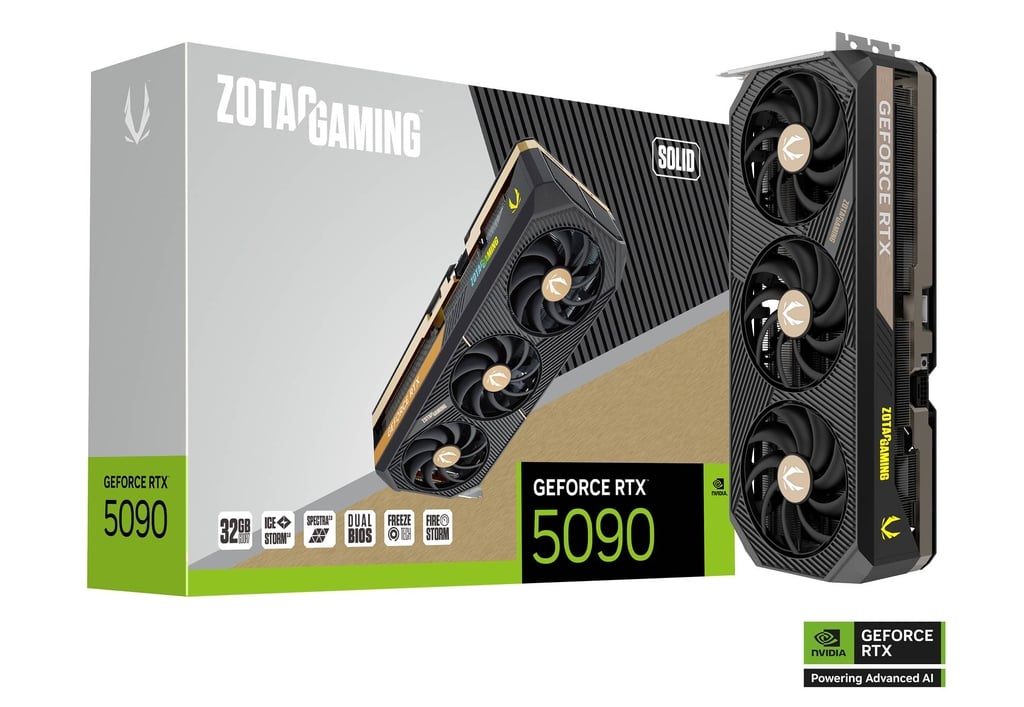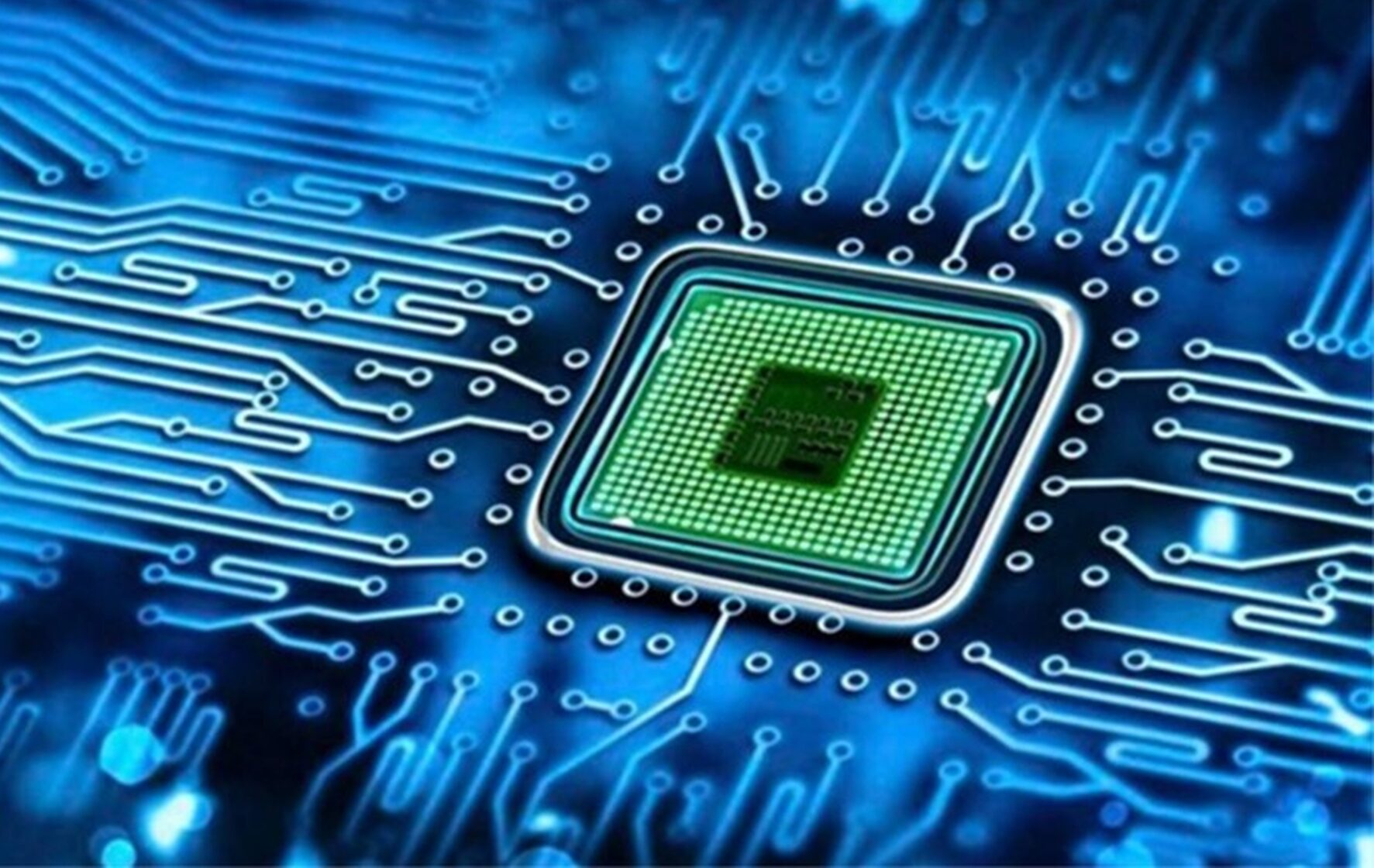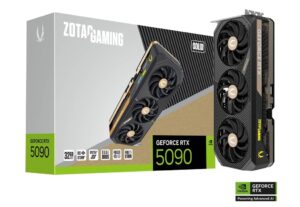Detailed Review of the NVIDIA RTX 5090: Graphics Power, Advanced AI Technologies, and Its Impact on Gaming
NVIDIA has long been at the forefront of the graphics card industry, continuously pushing boundaries with each new product. With the release of the RTX 4090, NVIDIA set a high bar for performance, but the company is not resting on its laurels. Enter the RTX 5090, a new flagship card that promises even more power and cutting-edge features. As one of the most powerful graphics cards ever produced, the RTX 5090 is expected to revolutionize graphics processing, AI, and gaming at ultra-high resolutions like 4K. While its performance is certainly impressive, the card’s high price point and power requirements have sparked discussions about whether it’s worth the investment. This review will delve into the RTX 5090’s performance, features, and technologies, providing a comprehensive guide to help users understand whether this is the right card for them.
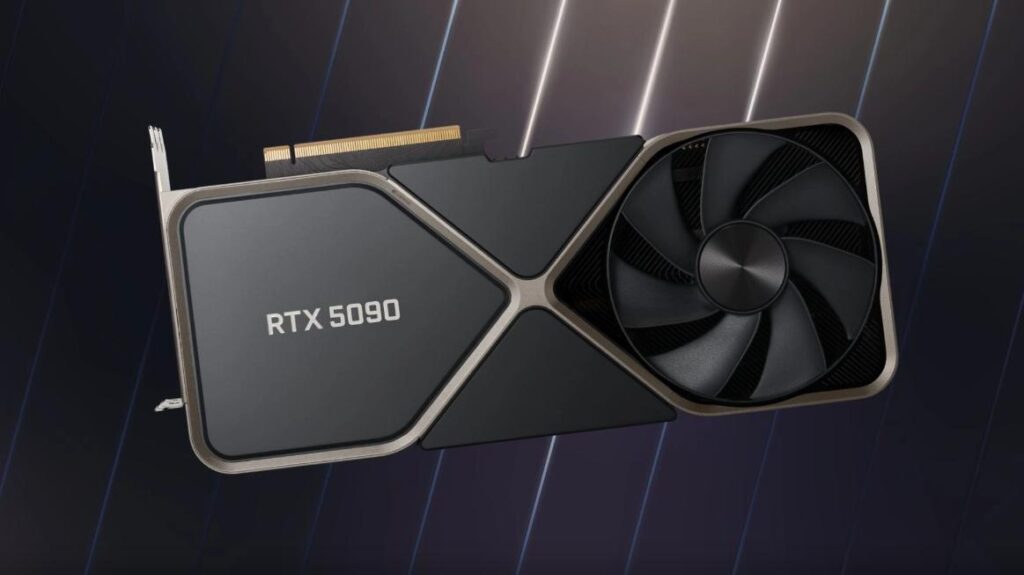
1. Overview of the RTX 5090: What Sets It Apart
The RTX 5090 is part of NVIDIA’s Blackwell architecture, a new generation of GPUs designed to deliver exceptional performance for gaming, AI workloads, and creative tasks. The RTX 5090 is equipped with more CUDA cores than its predecessor, the RTX 4090, a key factor contributing to its increased power. In fact, the number of CUDA cores has increased by approximately 30%, alongside improvements to the ray tracing cores and AI cores. The card is also manufactured using a new semiconductor process, which allows for better performance and efficiency.
NVIDIA has also incorporated DLSS 4 (Deep Learning Super Sampling) into the RTX 5090, which comes with new features like Multi-Frame Generation. This combination of hardware and software improvements makes the RTX 5090 an incredibly powerful tool for gamers, content creators, and professionals working with complex AI models and high-resolution graphics. However, these advancements also come with a higher power consumption, requiring users to have a robust system to support this new GPU.
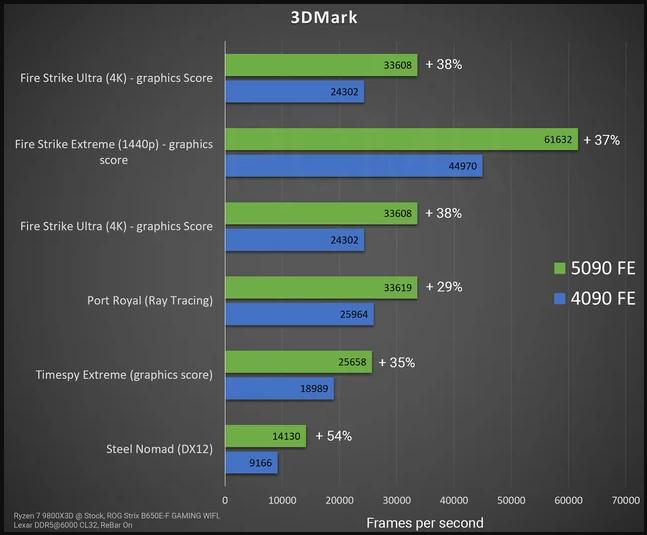
2. Performance Improvements: A 30% Boost Over the RTX 4090
The RTX 5090 brings with it a 30% performance boost over the RTX 4090, particularly when it comes to rasterization—the traditional method of rendering 2D images in games and applications. In raw power terms, this means that the RTX 5090 is better equipped to handle demanding workloads like 4K gaming and AI-based tasks. However, the performance gain isn’t as dramatic as one might expect from a new generation of GPUs. Instead of revolutionary changes, NVIDIA has opted for a refinement of the existing architecture, resulting in incremental improvements that provide a more consistent and stable experience.
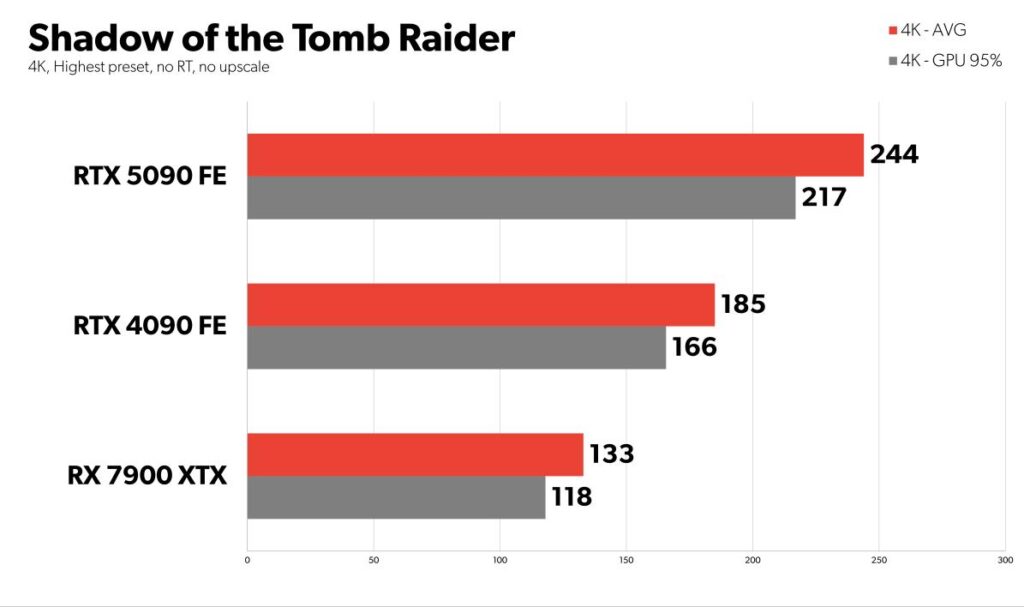
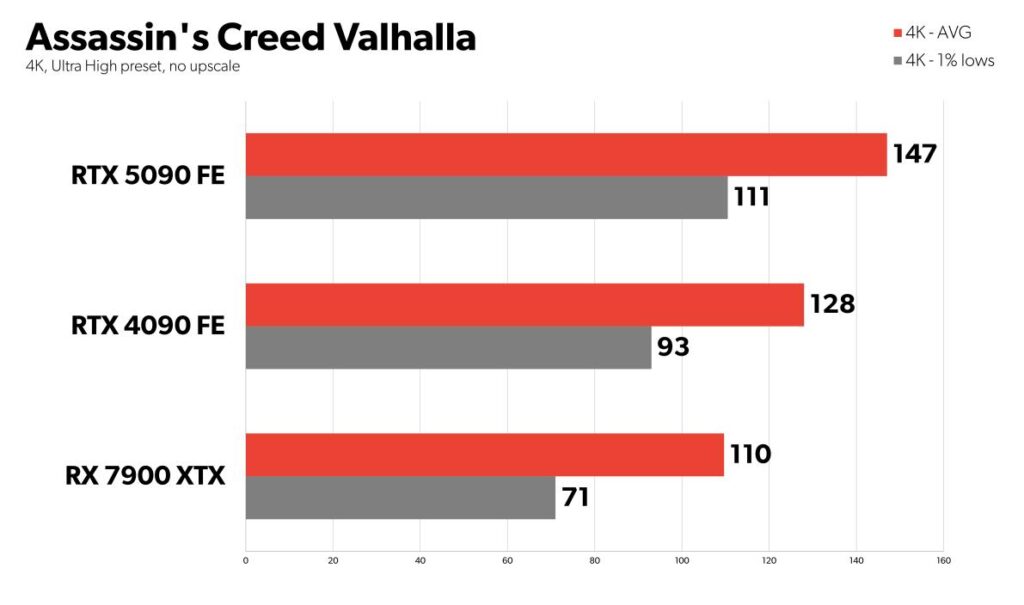
In benchmark tests, such as those involving popular AAA games like Cyberpunk 2077, Shadow of the Tomb Raider, and Assassin’s Creed Valhalla, the RTX 5090 outperforms the RTX 4090 by about 30-50%. This improvement is particularly noticeable in 4K gaming, where the RTX 5090 can sustain high frame rates at ultra settings, even in the most demanding titles. For example, Cyberpunk 2077 runs at over 100 FPS on the RTX 5090 at 4K resolution with ultra settings, without ray tracing enabled. In comparison, the RTX 4090 struggles to hit this mark.
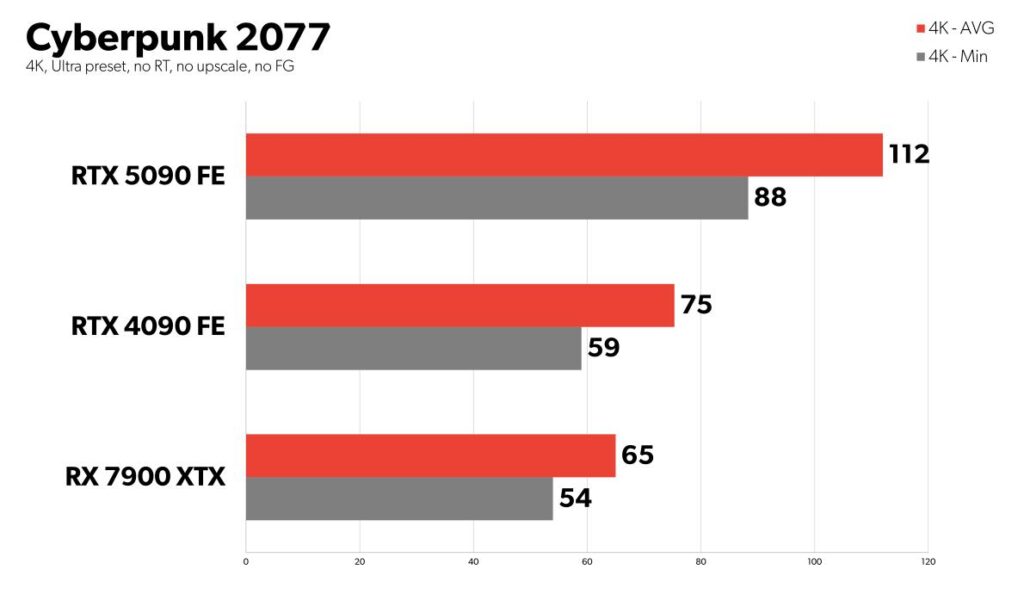
While the performance boost is significant, it’s worth noting that the RTX 5090’s improvements are most noticeable in high-demand scenarios—such as gaming at ultra-high resolutions or working with AI models—rather than in everyday tasks like browsing or general computing. The 30% performance increase in games is not a game-changer in itself but rather a fine-tuning of NVIDIA’s existing technology to meet the needs of modern users.
3. DLSS 4 and Multi-Frame Generation: Revolutionizing Frame Rates
One of the standout features of the RTX 5090 is DLSS 4 (Deep Learning Super Sampling), which introduces the groundbreaking Multi-Frame Generation (MFG) technology. DLSS is an AI-based upscaling technique that enhances performance by generating higher-quality images from lower-resolution inputs, reducing the GPU’s workload and improving frame rates. With DLSS 4, NVIDIA has taken this technology a step further.
The new Multi-Frame Generation feature in DLSS 4 allows the GPU to generate up to three additional frames based on a single input frame produced by the CPU and GPU. This results in a significant boost in frame rates—up to a 91% increase in Cyberpunk 2077, for example. With DLSS 4 enabled, the RTX 5090 can achieve an astonishing 249 FPS at 4K resolution in Cyberpunk 2077, which is far beyond what any previous generation of GPUs could manage. For comparison, without DLSS, the RTX 5090 can only reach around 71 FPS in the same game at ultra settings.
DLSS 4 and MFG deliver a noticeable improvement in gameplay smoothness, especially in demanding titles like Cyberpunk 2077 and Shadow of the Tomb Raider, where frame rates can be crucial for competitive gameplay. The ability to generate multiple frames simultaneously ensures a smoother gaming experience, particularly in ray-traced games, which typically require more GPU resources. Additionally, the AI model used in DLSS 4 is more efficient than its predecessor, requiring less VRAM and improving processing speeds by 40%.
Another impressive aspect of DLSS 4 is its ability to provide significant improvements in visual fidelity while maintaining high frame rates. As a result, games look sharper and more detailed, without sacrificing performance. This is especially valuable for gamers who want to experience the best of both worlds—superior visuals and smooth performance.
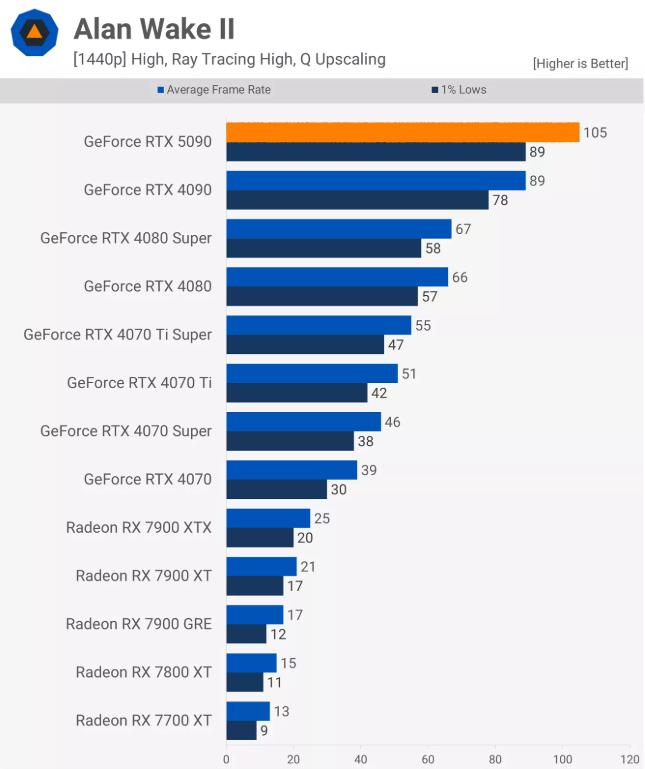
4. Ray Tracing Performance: The Next Level of Realism
While the RTX 5090 brings impressive improvements to AI processing and frame rate generation, its ray tracing performance is another area where the card shines. Ray tracing is a technique that simulates the behavior of light in a scene, producing more realistic shadows, reflections, and lighting effects. It’s a feature that has become increasingly important in modern games, but it’s also extremely demanding on a GPU.
With RTX 5090, the card can handle ray tracing at 4K resolution with impressive frame rates, particularly in titles like Cyberpunk 2077 and Control. While the improvement over the RTX 4090 is not as dramatic as in other areas, the RTX 5090 can deliver a smooth ray tracing experience at ultra settings. However, when playing extremely demanding titles like Black Myth: Wukong, the RTX 5090 may struggle to maintain 60 FPS even with ray tracing turned off, indicating that while the card is powerful, it is not yet perfect for the most resource-intensive games.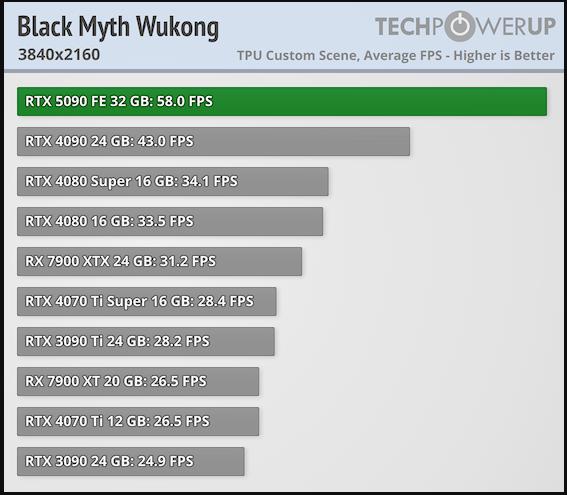
The DLSS 4 technology significantly improves the overall ray tracing experience by reducing the impact of ray tracing on frame rates. By upscaling lower-resolution images and generating additional frames through Multi-Frame Generation, the RTX 5090 ensures that players can enjoy ray-traced visuals without sacrificing performance.
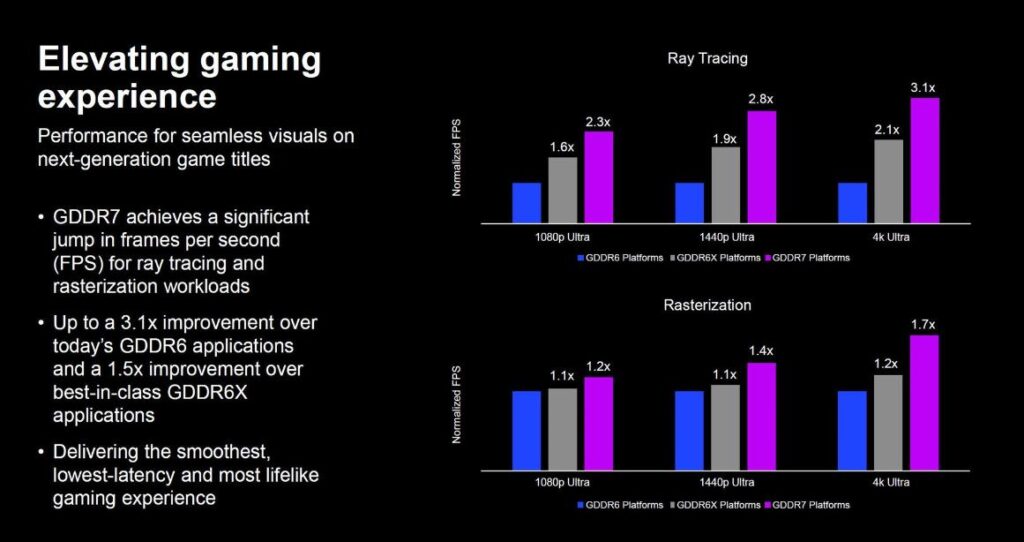
5. Power Consumption and Thermal Considerations
With great power comes great responsibility—specifically, the responsibility of ensuring that the card can be powered and kept cool. The RTX 5090 has a TDP (Thermal Design Power) of 575W, which is higher than the RTX 4090’s 450W. As a result, the RTX 5090 requires a 1000W power supply, compared to the recommended 850W for the RTX 4090. This increase in power consumption is necessary to support the enhanced performance of the RTX 5090 but may be a concern for users with older or less powerful power supplies.
The increased power draw also means that the RTX 5090 generates more heat during operation. Under load, the card’s temperature ranges from 70°C to 85°C, which is higher than the RTX 4090. However, NVIDIA has incorporated advanced cooling technology into the RTX 5090, including a vapor chamber cooling solution that efficiently dissipates heat without requiring a larger form factor. This allows the RTX 5090 to maintain its high performance without taking up excessive space in the PC case.
That said, some users have reported hearing coil whine during high-load scenarios. Coil whine is a high-pitched noise produced by electrical components under stress, and while it’s not uncommon in high-performance cards, it can be bothersome in quiet environments.
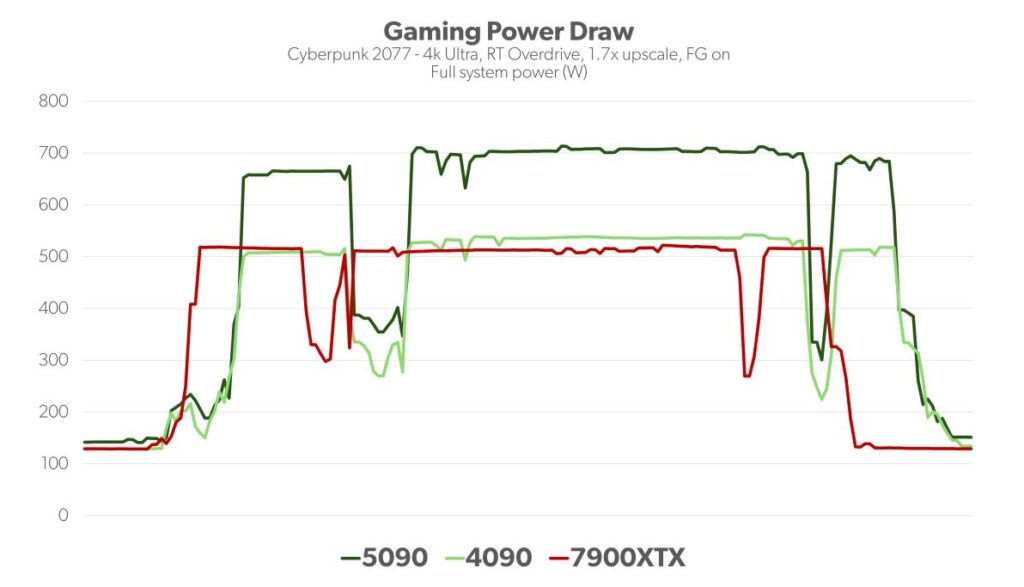
6. Is the RTX 5090 Worth the Price?
The RTX 5090 represents a significant leap forward in terms of graphics processing and AI capabilities. It’s undeniably one of the most powerful GPUs available today, offering unparalleled performance for 4K gaming, AI-based workloads, and creative applications. However, with this performance comes a steep price tag and significant power requirements.
For gamers who demand the highest possible frame rates and the best visual quality at 4K resolution, the RTX 5090 is a dream come true. The combination of DLSS 4, Multi-Frame Generation, and ray tracing provides an unparalleled gaming experience. However, the cost of the RTX 5090—coupled with the need for a 1000W power supply and advanced cooling solutions—may make it an impractical option for some users, especially those who do not require the extreme performance it offers.
If you’re an enthusiast or a professional who works with demanding applications like AI or high-end content creation, the RTX 5090 is certainly worth considering. It will provide exceptional performance in a wide range of tasks, and its future-proofing capabilities ensure that it will remain relevant for years to come. However, if you don’t need the absolute best, the RTX 4090 still offers fantastic performance at a lower price point.
In conclusion, the RTX 5090 is a powerhouse of a graphics card, pushing the limits of what’s possible in gaming and professional workloads. Whether it’s worth the investment depends on your specific needs and budget. For those who demand top-tier performance and are willing to invest in the best, the RTX 5090 is an excellent choice. For others, it might be wise to consider whether the extra power is necessary for your needs.
https://www.youtube.com/@nexttechreview
